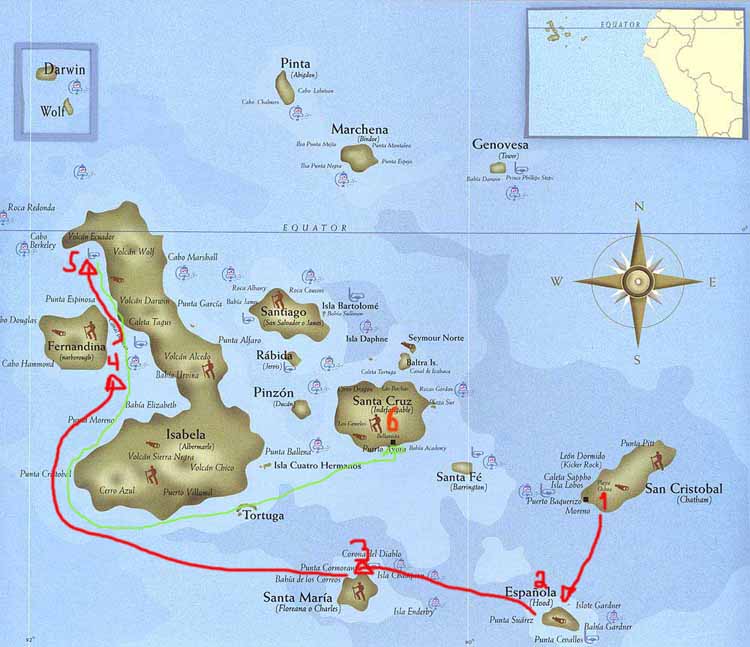|
The Galapagos Island is in the equatorial line, about 1000 kilometers west of Ecuador mainland. These Islands sit at Latitude 0, together with parts of Africa and South America. Its Longitude is 90 W. The Galapagos Archipelago is made of 13 large islands and is fairly solated from land masses. The islands are volcanic in origin and relatively new in evolutionary terms. They are considered to be one of the most active volcanic regions in the world. They are still forming and moving on a southeast path. The temperature is relatively hot and unchanging at these latitudes but there are two seasons for the Galapagos: a hot dry season and a garua cool season. As like many South American countries the cool waters of the von Humboldt current lower the temperatures during the June-December cooler season. The terrain of the land shows that the high elevations trap the moisture and stay green while lower elevations stay brown and drier. Galapagos is part of Ecuador and has had a fairly small population living there. The main language is Spanish though Ecuadorians are a mestizo society, a mix of their Spanish and Quechua heritages. With the advent of a booming tourist industry, there has been an exodus of documented and undocumented Ecuadorians trying to make a living from the tourist industry. The influx of “locals”, legal and illegal, to support this industry creates the need for housing, sewage, electricity and the required infrastructure to support this growth. In 1986 the Galapagos Marine Resources Reserve was established to protect this area from heavy fishing by international ships. An additional seven million hectares came under official protection. Presently 97% of the total land area of the islands constitutes Protected Lands. Below is the itinerary we followed during our stay in Galapagos.
|
